OP431 Powder
$0.00
OP431 Powder
| Product | OP431 Powder |
| CAS No. | 431-03-8 |
| Appearance | Light Gray Powder |
| Purity | ≥99%, ≥99.9%, ≥95%(Other purities are also available) |
| APS | 1-5 µM, 10-53 µM (Can be customized), Ask for other available size range. |
| Ingredient | Fe-W-Mo-Cr-V-Co |
| Density | 7.8-8.1g/cm3 |
| Molecular Weight | N/A |
| Product Codes | NCZ-DCY-357/25 |
OP431 Description:
OP431 Powder is one of the numerous advanced ceramic materials manufactured by Nanochemazone. Nanochemazone produces too many standard grades when applicable, including Mil Spec (military grade); ACS, Reagent and Technical Grade; Food, Agricultural and Pharmaceutical Grade; Optical Grade, USP and EP/BP (European Pharmacopoeia/British Pharmacopoeia) and follows applicable ASTM testing standards. Typical and custom packaging is available. Additional technical, research and safety (MSDS) information are available. Please request a quote above for more information on lead time and pricing.
OP431 Powder Related Information :
Storage Conditions:
Airtight sealed, avoid light and keep dry at room temperature.
Please contact us for customization and price inquiry
Email: [email protected]
Note: We supply different size ranges of Nano and micron as per the client’s requirements and also accept customization in various parameters.
Stainless Steel OP431 Powder
Stainless steel OP431 powder is a powdered form of stainless steel that consists of iron, chromium, nickel, and other alloying elements. It is manufactured through a specialized process called atomization, where molten stainless steel is rapidly cooled using gas or water, resulting in the formation of fine metal particles.
Overview of Stainless Steel OP431 Powder
OP431 stainless steel belongs to the ferritic grade steels which contain chromium as the principal alloying element. The addition of aluminum enhances oxidation and corrosion resistance at high temperatures.
Key characteristics of OP431 powder include:
Excellent oxidation and corrosion resistance up to 1150°C
Good creep resistance and thermal fatigue strength
Excellent thermo-mechanical stability
High thermal conductivity and low thermal expansion
Cost-effective compared to austenitic stainless steels
Available in various particle size distributions
OP431 powder is ideal for applications requiring oxidation resistance, thermal stability and moderate strength at elevated temperatures.
Chemical Composition of OP431 Powder
OP431 powder has the following nominal composition:
| Element | Weight % |
| Iron (Fe) | Balance |
| Chromium (Cr) | 16-18% |
| Aluminum (Al) | 3-5% |
| Yttrium (Y) | 0.2-0.5% |
| Carbon (C) | 0.03% max |
| Silicon (Si) | 1% max |
| Manganese (Mn) | 1% max |
Properties of OP431 Powder
Key properties of OP431 powder include:
| Property | Value |
| Density | 7.3 g/cm3 |
| Melting Point | 1400-1450°C |
| Thermal Conductivity | 29 W/mK |
| Electrical Resistivity | 0.6 μΩ.cm |
| Young’s Modulus | 200 GPa |
| Poisson’s Ratio | 0.27-0.30 |
| Tensile Strength | 450-650 MPa |
| Yield Strength | 280-480 MPa |
| Elongation | 15-20% |
| Oxidation Resistance | Excellent up to 1150°C |
The properties like high temperature strength, oxidation resistance, and thermal stability make OP431 suitable for demanding applications.
Production Method for OP431 Powder
OP431 powder can be produced via:
Gas Atomization – High pressure inert gas used to atomize the molten alloy resulting in fine spherical powder ideal for AM.
Water Atomization – High velocity water jet breaks up the molten stream producing irregular powder particles. Lower cost but higher oxygen pickup.
Mechanical Alloying – Ball milling of blended elemental powders followed by sintering and secondary atomization.
Gas atomization allows excellent control over particle size distribution, morphology, oxygen pickup and microstructure.
Applications of OP431 Powder
Typical applications of OP431 powder include:
Additive Manufacturing – Selective laser melting to produce complex parts needing high temperature oxidation resistance.
Thermal Spray Coatings – Applied via arc spraying to provide protective coatings on components operating at over 1000°C.
Brazing Filler – For joining ferritic stainless steel parts in high temperature applications.
Solid Fuel Igniters – Powder metallurgy igniter plugs used in industrial furnaces and turbines.
Molten Metal Processing – Powder metallurgy conveyor rolls, tundishes and ladles used in molten metal handling.
Specifications of OP431 Powder
OP431 powder is available under various size ranges, shapes and grades:
Particle Size: From 15-45 μm for AM methods, up to 150 μm for thermal spray processes.
Morphology: Spherical, irregular and blended shapes. Spherical powder has excellent flowability.
Purity: From commercial to high purity grades based on application requirements.
Oxygen Content: Levels maintained below 2000 ppm for most applications.
Flow Rate: Powder can be customized for flow rates above 25 s/50 g.
Storage and Handling of OP431 Powder
OP431 powder requires the following storage and handling:
Should be stored in sealed containers under inert gas to prevent oxidation
Avoid accumulation of fine powder to minimize dust explosion risks
Use proper PPE, ventilation, grounding and safety practices during handling
Prevent contact between powder and incompatible materials
Follow safety guidelines provided by supplier SDS
Proper protective measures must be taken when handling this reactive alloy powder.
Inspection and Testing of OP431 Powder
Key quality control tests performed on OP431 powder include:
Chemical analysis using OES or XRF to ensure composition is within specified limits
Particle size distribution as per ASTM B822 standard
Morphology analysis through SEM
Powder flow rate measured as per ASTM B213 standard
Oxygen and nitrogen content testing by inert gas fusion
Density determined by helium pycnometry
Microstructure characterization by XRD
Thorough testing ensures the powder meets the required chemical, physical and microstructural characteristics for the intended application.
Comparison Between OP431 and 316L Stainless Steel Powders
OP431 and 316L stainless steel powders are compared:
| Parameter | OP431 | 316L |
| Type | Ferritic | Austenitic |
| Cr content | 16-18% | 16-18% |
| Ni content | – | 10-14% |
| High temperature strength | Higher | Lower |
| Corrosion resistance | Moderate | Excellent |
| Cost | Lower | Higher |
| Applications | Thermal spray, igniters | Automotive, construction |
| Weldability | Poor | Excellent |
OP431 offers much better high temperature strength whereas 316L provides excellent fabrication characteristics and corrosion resistance.
OP431 Powder FAQs
Q: How is OP431 powder produced?
A: OP431 powder is commercially produced using gas atomization, water atomization, and mechanical alloying followed by sintering. Gas atomization provides the best control of powder characteristics.
Q: What are the main applications of OP431 powder?
A: Key applications include thermal spray coatings, additive manufacturing, brazing filler, powder metallurgy igniter plugs, and high temperature molten metal handling components where oxidation resistance is needed.
Q: What is the typical OP431 powder size range used in metal AM?
A: For most metal AM processes, the ideal OP431 powder size range is 15-45 microns with spherical morphology and good powder flow characteristics.
Q: Does OP431 powder require any special handling precautions?
A: Yes, it is recommended to handle this reactive powder carefully under inert atmosphere using proper ventilation, grounding, and PPE.
Q: Where can I purchase OP431 powder suitable for thermal spray coatings?
A: For thermal spray applications requiring high temperature oxidation resistance, OP431 powder can be purchased from leading manufacture.
Category: Iron Based Alloy Powder
Description
Description
Note: For pricing & ordering information, please get in touch with us at [email protected]
Please contact us for quotes on Larger Quantities and customization. E-mail: [email protected]
Customization:
If you are planning to order large quantities for your industrial and academic needs, please note that customization of parameters (such as size, length, purity, functionalities, etc.) is available upon request.
NOTE:
Images, pictures, colors, particle sizes, purity, packing, descriptions, and specifications for the real and actual goods may differ. These are only used on the website for the purposes of reference, advertising, and portrayal. Please contact us via email at [email protected] or by phone at (+1 780 612 4177) if you have any
Reviews (0)
Only logged in customers who have purchased this product may leave a review.
Shipping & Delivery
Related products
17-4PH Stainless Steel Powder
$0.00
17-4PH Stainless Steel Powder
| Product | 17-4PH Stainless Steel Powder |
| CAS No. | 7439-89-6 |
| Appearance | Gray Powder |
| Purity | ≥99%, ≥99.9%, ≥95%(Other purities are also available) |
| APS | 1-5 µM, 10-53 µM (Can be customized), Ask for other available size range. |
| Ingredient | Fe-Cr-Ni-Cu-Nb |
| Density | 7.75g/cm3 |
| Molecular Weight | N/A |
| Product Codes | NCZ-DCY-347/25 |
17-4PH Stainless Steel Description:
17-4PH Stainless Steel Powder is one of the numerous advanced ceramic materials manufactured by Nanochemazone. Nanochemazone produces too many standard grades when applicable, including Mil Spec (military grade); ACS, Reagent and Technical Grade; Food, Agricultural and Pharmaceutical Grade; Optical Grade, USP and EP/BP (European Pharmacopoeia/British Pharmacopoeia) and follows applicable ASTM testing standards. Typical and custom packaging is available. Additional technical, research and safety (MSDS) information are available. Please request a quote above for more information on lead time and pricing.17-4PH Stainless Steel Powder Related Information :
Storage Conditions: Airtight sealed, avoid light and keep dry at room temperature. Please contact us for customization and price inquiry Email: [email protected] Note: We supply different size ranges of Nano and micron as per the client’s requirements and also accept customization in various parameters. Best 17-4PH stainless steel powder for 3D Printing 17-4PH powder, also known as 17-4 Precipitation Hardening stainless steel powder, is a high-strength, corrosion-resistant material used in various industries. It belongs to the martensitic stainless steel family and offers an excellent combination of mechanical properties and corrosion resistance. The “17-4PH” designation refers to the composition of the alloy, which consists of approximately 17% chromium, 4% nickel, 4% copper, and a small amount of other elements. Overview of 17-4PH Stainless Steel Powder for 3D Printing 17-4PH is a precipitation hardening stainless steel powder widely used for additive manufacturing of high-strength, corrosion-resistant components across aerospace, medical, automotive, and general engineering applications. This article provides a detailed guide to 17-4PH powder for 3D printing. It covers composition, properties, print parameters, applications, specifications, suppliers, handling, inspection, comparisons, pros and cons, and FAQs. Key information is presented in easy-to-reference tables. Composition of 17-4PH Powder 17-4PH is a chromium-copper precipitation hardening stainless steel with a composition of:| Element | Weight % | Purpose |
| Iron | Balance | Principal matrix element |
| Chromium | 15 – 17.5 | Oxidation resistance |
| Copper | 3 – 5 | Precipitation hardening |
| Nickel | 3 – 5 | Austenite stabilizer |
| Niobium | 0.15 – 0.45 | Carbide former |
| Manganese | 1 max | Deoxidizer |
| Silicon | 1 max | Deoxidizer |
| Carbon | 0.07 max | Strengthener and carbide former |
| Property | Description |
| High strength | Tensile strength up to 1310 MPa in aged condition |
| Hardness | Up to 40 HRC when aged |
| Corrosion resistance | Comparable to 316L stainless in many environments |
| Toughness | Superior to martensitic stainless steels |
| Wear resistance | Better than 300 series stainless steels |
| High temperature stability | Strength maintained up to 300°C |
| Parameter | Typical value | Purpose |
| Layer height | 20-100 μm | Balance speed and resolution |
| Laser power | 150-400 W | Sufficient melting without evaporation |
| Scan speed | 400-1000 mm/s | Productivity vs density |
| Hatch spacing | 100-200 μm | Density and properties |
| Support structure | Minimal | Easy removal |
| Hot isostatic pressing | 1120°C, 100 MPa, 3h | Eliminate porosity |
| Industry | Applications |
| Aerospace | Structural brackets, fixtures, actuators |
| Medical | Dental implants, surgical instruments |
| Automotive | High strength fasteners, gears |
| Consumer | Watch cases, sporting equipment |
| Industrial | End-use metal tooling, jigs, fixtures |
| Parameter | Specification |
| Particle size range | 15-45 μm typical |
| Particle shape | Spherical morphology |
| Apparent density | > 4 g/cc |
| Tap density | > 6 g/cc |
| Hall flow rate | > 23 sec for 50 g |
| Purity | >99.9% |
| Oxygen content | <100 ppm |
| Method | Parameters Checked |
| Sieve analysis | Particle size distribution |
| SEM imaging | Particle morphology |
| EDX | Chemistry and composition |
| XRD | Phases present |
| Pycnometry | Density |
| Hall flow rate | Powder flowability |
| Alloy | Strength | Corrosion Resistance | Cost | Weldability |
| 17-4PH | Excellent | Good | Medium | Fair |
| 316L | Medium | Excellent | Medium | Excellent |
| IN718 | Good | Good | High | Fair |
| CoCr | Medium | Fair | Medium | Excellent |
| Pros | Cons |
| High strength-to-weight ratio | Lower oxidation resistance than austenitic stainless steels |
| Good combination of strength and corrosion resistance | Required post-processing like HIP and heat treatment |
| Lower cost than exotic alloys | Controlled atmosphere storage needed |
| Established credentials in AM | Difficult to weld and machine |
| Comparable properties to wrought material | Susceptible to pitting and crevice corrosion |
300M Stainless Steel Powder
$0.00
300M Stainless Steel Powder
| Product | 300M Stainless Steel Powder |
| CAS No. | N/A |
| Appearance | Silver-Gray Powder |
| Purity | ≥99%, ≥99.9%, ≥95%(Other purities are also available) |
| APS | 1-5 µM, 10-53 µM (Can be customized), Ask for other available size range. |
| Ingredient | Fe-Cr-Ni |
| Density | 7.85g/cm3 |
| Molecular Weight | N/A |
| Product Codes | NCZ-DCY-337/25 |
300M Stainless Steel Description:
300M Stainless Steel Powder is one of the numerous advanced ceramic materials manufactured by Nanochemazone. Nanochemazone produces too many standard grades when applicable, including Mil Spec (military grade); ACS, Reagent and Technical Grade; Food, Agricultural and Pharmaceutical Grade; Optical Grade, USP and EP/BP (European Pharmacopoeia/British Pharmacopoeia) and follows applicable ASTM testing standards. Typical and custom packaging is available. Additional technical, research and safety (MSDS) information are available. Please request a quote above for more information on lead time and pricing.300M Stainless Steel Powder Related Information :
Storage Conditions: Airtight sealed, avoid light and keep dry at room temperature. Please contact us for customization and price inquiry Email: [email protected] Note: We supply different size ranges of Nano and micron as per the client’s requirements and also accept customization in various parameters. 300M Stainless Steel Powder 300M stainless steel powder is a specialized material used in powder metallurgy and additive manufacturing applications. This high-alloy austenitic stainless steel exhibits excellent corrosion resistance and high strength properties. 300M powder can be used to create complex metal components using advanced manufacturing techniques like selective laser sintering (SLS), direct metal laser sintering (DMLS), and binder jetting. The fine spherical powders spread easily and sinter uniformly, producing dense parts. 300M has a high nickel and chromium content which gives it excellent corrosion resistance comparable to 304 and 316 stainless steel. The composition is controlled within narrow ranges as shown below: 300M Stainless Steel Powder Composition| Element | Composition Range |
| Carbon (C) | 0.05% max |
| Silicon (Si) | 1.0% max |
| Manganese (Mn) | 2.0% max |
| Phosphorus (P) | 0.03% max |
| Sulfur (S) | 0.01% max |
| Chromium (Cr) | 24.0-26.0% |
| Nickel (Ni) | 19.0-22.0% |
| Molybdenum (Mo) | 4.0-5.0% |
| Nitrogen (N) | 0.10-0.16% |
| Iron (Fe) | Balance |
| Property | Value |
| Density | 7.9 g/cm3 |
| Melting Point | 1370°C (2500°F) |
| Thermal Conductivity | 12 W/m-K |
| Electrical Resistivity | 72 μΩ-cm |
| Modulus of Elasticity | 200 GPa |
| Poisson’s Ratio | 0.29 |
| Tensile Strength | 165ksi (1140 MPa) |
| Yield Strength | 140ksi (965 MPa) |
| Elongation | 35% |
| Industry | Common Applications |
| Aerospace | Engine components, structural parts, landing gear |
| Automotive | Valve bodies, pump parts, turbocharger components |
| Medical | Implants, prosthetics, surgical instruments |
| Chemical | Pumps, valves, pipe fittings |
| Oil & Gas | Downhole tools, wellhead parts, offshore components |
| Industrial | Food processing equipment, press plates, dies and molds |
| Consumer | Watch cases, jewelry, decorative artware |
| Parameter | Typical Values |
| Particle shape | Spherical, satellite, irregular |
| Particle size | 15-45 μm, 15-53 μm, 53-150 μm |
| Apparent density | 2.5-4.5 g/cm3 |
| Tap density | 3.5-4.5 g/cm3 |
| Flow rate | 15-25 s/50g |
| Carbon content | < 0.05 wt% |
| Oxygen content | < 0.15 wt% |
| Nitrogen content | 0.10-0.16 wt% |
| Hydrogen content | < 0.0015 wt% |
| Test | Details |
| Chemical analysis | ICP-OES, ICP-MS, wet chemistry, spark OES |
| Particle size distribution | Laser diffraction, sieve analysis |
| Morphology | SEM imaging, microscopy |
| Powder density | Scott volumeter, Hall flowmeter |
| Flow rate | Hall flowmeter |
| Moisture analysis | Thermogravimetric analysis |
| Test | Details |
| Density | Archimedes’, Helium pycnometry |
| Surface roughness | Profilometer, interferometry |
| Hardness | Rockwell, Vickers, Brinell |
| Tensile strength | ASTM E8 |
| Microstructure | Optical microscopy, image analysis |
| Layer bonding | Electron microscopy, dye penetrant |
| Porosity | X-ray tomography, image analysis |
| Surface defects | Penetrant testing, microscopy |
| Alloy | Composition | Properties | Applications |
| 300M | High Ni, Cr, Mo | Excellent corrosion resistance, good ductility and toughness, high strength to 600°C | Aerospace, oil & gas, chemical, high temp uses |
| 316L | Medium Ni, Cr | Excellent corrosion resistance, readily weldable, good bio-compatibility | Marine hardware, medical implants, food processing |
| 17-4PH | Medium Ni, Cr + Cu | High hardness and strength, good corrosion resistance, heat treatable | Aerospace, tooling, automotive, plastic molds |
304l Stainless Steel Powder
$0.00
304l Stainless Steel Powder
| Product | 304l Stainless Steel Powder |
| CAS No. | 11143-21-4 |
| Appearance | Metallic Gray or Silver Powder |
| Purity | ≥99%, ≥99.9%, ≥95%(Other purities are also available) |
| APS | 1-5 µM, 10-53 µM (Can be customized), Ask for other available size range. |
| Ingredient | Fe-Cr-Ni |
| Density | 7.9g/cm3 |
| Molecular Weight | N/A |
| Product Codes | NCZ-DCY-338/25 |
304l Stainless Steel Description:
304l Stainless Steel Powder is one of the numerous advanced ceramic materials manufactured by Nanochemazone. Nanochemazone produces too many standard grades when applicable, including Mil Spec (military grade); ACS, Reagent and Technical Grade; Food, Agricultural and Pharmaceutical Grade; Optical Grade, USP and EP/BP (European Pharmacopoeia/British Pharmacopoeia) and follows applicable ASTM testing standards. Typical and custom packaging is available. Additional technical, research and safety (MSDS) information are available. Please request a quote above for more information on lead time and pricing.304l Stainless Steel Powder Related Information :
Storage Conditions: Airtight sealed, avoid light and keep dry at room temperature. Please contact us for customization and price inquiry Email: [email protected] Note: We supply different size ranges of Nano and micron as per the client’s requirements and also accept customization in various parameters. 304l Stainless Steel Powder 304L stainless steel powder is an austenitic chromium-nickel stainless steel powder with low carbon content. It offers excellent corrosion resistance, good formability and weldability, and widely used for powder metallurgy applications. The ‘L’ denotes lower carbon compared to 304 standard grade. The low carbon minimizes carbide precipitation and maximizes corrosion resistance. Powder metallurgy 304L provides a cost-effective alternative to 316L for non-critical applications not needing molybdenum alloying. Overview 304L stainless steel powder is an austenitic chromium-nickel stainless steel powder with low carbon content. It offers excellent corrosion resistance, good formability and weldability, and widely used for powder metallurgy applications. The ‘L’ denotes lower carbon compared to 304 standard grade. The low carbon minimizes carbide precipitation and maximizes corrosion resistance. Powder metallurgy 304L provides a cost-effective alternative to 316L for non-critical applications not needing molybdenum alloying. This article provides an in-depth look at 304L stainless steel powder covering composition, properties, processing, applications, specifications, suppliers, costs, and other technical details. Composition The nominal composition of 304L stainless steel powder is listed below: Table: Typical composition of 304L stainless steel powder| Element | Weight % |
| Chromium (Cr) | 18-20 |
| Nickel (Ni) | 8-10.5 |
| Manganese (Mn) | <2 |
| Silicon (Si) | <1 |
| Carbon (C) | <0.03 |
| Sulfur (S) | <0.03 |
| Phosphorus (P) | <0.045 |
| Nitrogen (N) | <0.1 |
| Iron (Fe) | Balance |
| Property | Value |
| Density | 7.9-8.1 g/cm3 |
| Ultimate Tensile Strength | 505-620 MPa |
| Yield Strength | 205-275 MPa |
| Elongation | ≥40% |
| Hardness | ≤92 HRB |
| Modulus of Elasticity | 190-210 GPa |
| Melting Point | 1400-1450°C |
| Thermal Conductivity | 16 W/m-K |
| Electrical Resistivity | 0.072 μΩ-cm |
| Attribute | Details |
| Particles sizes | 15-45 μm, 10-100 μm |
| Morphology | Spherical, irregular |
| Apparent density | 2.5-4.5 g/cm3 |
| Tap density | 4-5 g/cm3 |
| Hall flow rate | <30 s/50g |
| Purity | >99.5% |
| Oxygen content | <2000 ppm |
| Moisture content | <0.2% |
310 Powder
$0.00
310 Powder
| Product | 310 Powder |
| CAS No. | N/A |
| Appearance | Metallic Gray Powder |
| Purity | ≥99%, ≥99.9%, ≥95%(Other purities are also available) |
| APS | 1-5 µM, 10-53 µM (Can be customized), Ask for other available size range. |
| Ingredient | Fe-25Cr-20Ni |
| Density | 7.7-8.0g/cm3 |
| Molecular Weight | N/A |
| Product Codes | NCZ-DCY-338/25 |
310 Description:
310 Powder is one of the numerous advanced ceramic materials manufactured by Nanochemazone. Nanochemazone produces too many standard grades when applicable, including Mil Spec (military grade); ACS, Reagent and Technical Grade; Food, Agricultural and Pharmaceutical Grade; Optical Grade, USP and EP/BP (European Pharmacopoeia/British Pharmacopoeia) and follows applicable ASTM testing standards. Typical and custom packaging is available. Additional technical, research and safety (MSDS) information are available. Please request a quote above for more information on lead time and pricing.310 Powder Related Information :
Storage Conditions: Airtight sealed, avoid light and keep dry at room temperature. Please contact us for customization and price inquiry Email: [email protected] Note: We supply different size ranges of Nano and micron as per the client’s requirements and also accept customization in various parameters. 310 Powder 310 powder is an austenitic stainless steel powder containing high levels of chromium, nickel and nitrogen for enhanced mechanical properties and corrosion resistance. It offers an excellent combination of strength, hardness, toughness and wear resistance. Overview of 310 Powder 310 powder is an austenitic stainless steel powder containing high levels of chromium, nickel and nitrogen for enhanced mechanical properties and corrosion resistance. It offers an excellent combination of strength, hardness, toughness and wear resistance. Key properties and advantages of 310 powder include: 310 Powder Properties and Characteristics| Properties | Details |
| Composition | Fe-25Cr-20Ni-0.25N alloy |
| Density | 8.1 g/cc |
| Particle shape | Irregular, angular |
| Size range | 10-150 microns |
| Apparent density | Up to 50% of true density |
| Flowability | Moderate |
| Strength | Very high for a 300 series powder |
| Wear resistance | Excellent due to work hardening |
| Element | Weight % |
| Iron (Fe) | Balance |
| Chromium (Cr) | 24-26% |
| Nickel (Ni) | 19-22% |
| Nitrogen (N) | 0.2-0.4% |
| Carbon (C) | 0.25% max |
| Silicon (Si) | 1.5% max |
| Manganese (Mn) | 2% max |
| Sulfur (S) | 0.03% max |
| Phosphorus (P) | 0.045% max |
| Property | Values |
| Density | 8.1 g/cc |
| Melting point | 1370-1400°C |
| Electrical resistivity | 0.8 μΩ-m |
| Thermal conductivity | 12 W/mK |
| Thermal expansion | 11 x 10^-6 /K |
| Maximum service temperature | 1150°C |
| Property | Values |
| Tensile strength | 760-900 MPa |
| Yield strength | 450-550 MPa |
| Elongation | 35-40% |
| Hardness | 32-38 HRC |
| Impact strength | 50-100 J |
| Modulus of elasticity | 190-210 GPa |
| Industry | Example Uses |
| Petrochemical | Valves, pumps, shafts |
| Food processing | Extruder screws, blades |
| Automotive | Gears, shafts, fasteners |
| Manufacturing | Press tooling, bearing cages |
| Medical | Surgical instruments, implants |
| Standard | Description |
| ASTM A276 | Standard specification for stainless steel bars and shapes |
| ASTM A314 | Standard for stainless steel bent pipe and tubing |
| ASME SA-479 | Specification for stainless steel tubing |
| AMS 5517 | Annealed corrosion resistant steel bar, wire, forgings |
| AMS 5903 | Precipitation hardening stainless steel bar, wire, forgings |
| Particle Size | Characteristics |
| 10-45 microns | Ultrafine grade for high density and surface finish |
| 45-150 microns | Coarse grade provides good flowability |
| 15-150 microns | Standard grade for pressing and sintering |
| Apparent Density | Details |
| Up to 50% of true density | For irregular powder morphology |
| 4.5-5.5 g/cc typical | Improves with greater packing density |
| Method | Details |
| Gas atomization | High pressure inert gas breaks molten metal stream into fine droplets |
| Water atomization | High pressure water jet breaks metal into fine particles |
| Vacuum induction melting | High purity input materials melted under vacuum |
| Multiple remelting | Improves chemical homogenization |
| Sieving | Classifies powder into different particle size ranges |
| Recommendation | Reason |
| Use PPE and ventilation | Avoid exposure to fine metallic particles |
| Ensure proper grounding | Prevent static discharge while handling |
| Avoid ignition sources | Powder can combust in oxygen atmosphere |
| Use non-sparking tools | Prevent possibility of ignition |
| Follow safety protocols | Reduce risk of burns, inhalation, ingestion |
| Store in stable containers | Prevent contamination or oxidation |
| Test | Details |
| Chemical analysis | ICP and XRF verify composition |
| Particle size distribution | Laser diffraction determines size distribution |
| Apparent density | Hall flowmeter test per ASTM B212 standard |
| Powder morphology | SEM imaging shows particle shape |
| Flow rate analysis | Gravity flow rate through specified nozzle |
| Loss on ignition | Determines residual moisture content |
| Parameter | 310 | 316L |
| Density | 8.1 g/cc | 8.0 g/cc |
| Strength | 760-900 MPa | 485-550 MPa |
| Hardness | 32-38 HRC | 79-95 HRB |
| Corrosion resistance | Very good | Excellent |
| Cost | Low | High |
| Uses | Wear parts, tools | Chemical plants, marine |
316L Powder
$0.00
316L Powder
| Product | 316L Powder |
| CAS No. | 12597-68-1 |
| Appearance | Metallic Gray Powder |
| Purity | ≥99%, ≥99.9%, ≥95%(Other purities are also available) |
| APS | 1-5 µM, 10-53 µM (Can be customized), Ask for other available size range. |
| Ingredient | Fe-Cr-Ni-Mo |
| Density | 7.99g/cm3 |
| Molecular Weight | 55.22g/mol |
| Product Codes | NCZ-DCY-349/25 |
316L Description:
316L Powder is one of the numerous advanced ceramic materials manufactured by Nanochemazone. Nanochemazone produces too many standard grades when applicable, including Mil Spec (military grade); ACS, Reagent and Technical Grade; Food, Agricultural and Pharmaceutical Grade; Optical Grade, USP and EP/BP (European Pharmacopoeia/British Pharmacopoeia) and follows applicable ASTM testing standards. Typical and custom packaging is available. Additional technical, research and safety (MSDS) information are available. Please request a quote above for more information on lead time and pricing.316L Powder Related Information :
Storage Conditions: Airtight sealed, avoid light and keep dry at room temperature. Please contact us for customization and price inquiry Email: [email protected] Note: We supply different size ranges of Nano and micron as per the client’s requirements and also accept customization in various parameters. Best Stainless Steel 316L Powder for 3D Printing Stainless steel 316L powder is a versatile and widely used material in various industries. Its unique properties make it suitable for applications ranging from 3D printing to biomedical implants. In this article, we will explore the characteristics, uses, manufacturing process, and advantages of stainless steel 316L powder. Overview of Stainless Steel 316L Powder 316L stainless steel belongs to the austenitic class of stainless steels. The addition of 2-3% molybdenum along with nickel and chromium imparts excellent pitting and crevice corrosion resistance in harsh environments. The ‘L’ denotes lower carbon content to avoid carbide precipitation during welding. Key characteristics of 316L powder include: Excellent corrosion resistance in harsh environments High oxidation and sulfidation resistance at elevated temperatures Very good weldability and formability Non-magnetic austenitic structure Available in range of particle size distributions 316L powder is suitable for applications requiring excellent corrosion resistance like chemical processing, pharmaceutical, food and beverage, marine equipment and biomedical implants. This article provides a detailed overview of 316L powder. Chemical Composition of 316L Powder| Element | Weight % |
| Iron (Fe) | Balance |
| Chromium (Cr) | 16-18% |
| Nickel (Ni) | 10-14% |
| Molybdenum (Mo) | 2-3% |
| Manganese (Mn) | ≤ 2% |
| Silicon (Si) | ≤ 1% |
| Carbon (C) | ≤ 0.03% |
| Phosphorus (P) | ≤ 0.045% |
| Sulfur (S) | ≤ 0.03% |
| Property | Value |
| Density | 7.9-8.1 g/cm3 |
| Melting Point | 1370-1400°C |
| Thermal Conductivity | 16 W/mK |
| Electrical Resistivity | 0.75 μΩ.cm |
| Young’s Modulus | 190-210 GPa |
| Poisson’s Ratio | 0.27-0.30 |
| Tensile Strength | 485-620 MPa |
| Yield Strength | 170-310 MPa |
| Elongation | 40-50% |
| Hardness | 79-95 HRB |
| Parameter | 316L | 304L |
| Composition | Fe-Cr-Ni-Mo | Fe-Cr-Ni |
| Corrosion resistance | Much better | Good |
| Cost | Higher | Lower |
| Temperature resistance | Better | Good |
| Weldability | Excellent | Excellent |
| Availability | Moderate | Excellent |
| Applications | Marine, chemical industry | Consumer products, appliances |
317L Powder
$0.00
317L Powder
| Product | 317L Powder |
| CAS No. | 12597-68-1 |
| Appearance | Metallic Gray Powder |
| Purity | ≥99%, ≥99.9%, ≥95%(Other purities are also available) |
| APS | 1-5 µM, 10-53 µM (Can be customized), Ask for other available size range. |
| Ingredient | Fe-18Cr-12Ni-3Mo |
| Density | 7.9g/cm3 |
| Molecular Weight | N/A |
| Product Codes | NCZ-DCY-341/25 |
317L Description:
317L Powder is one of the numerous advanced ceramic materials manufactured by Nanochemazone. Nanochemazone produces too many standard grades when applicable, including Mil Spec (military grade); ACS, Reagent and Technical Grade; Food, Agricultural and Pharmaceutical Grade; Optical Grade, USP and EP/BP (European Pharmacopoeia/British Pharmacopoeia) and follows applicable ASTM testing standards. Typical and custom packaging is available. Additional technical, research and safety (MSDS) information are available. Please request a quote above for more information on lead time and pricing.317L Powder Related Information:
Storage Conditions: Airtight sealed, avoid light and keep dry at room temperature. Please contact us for customization and price inquiry Email: [email protected] Note: We supply different size ranges of Nano and micron as per the client’s requirements and also accept customization in various parameters. 317L Powder 317L powder is an austenitic stainless steel powder containing 18% chromium, 3% molybdenum, and 0.08% carbon. It offers an excellent combination of corrosion resistance, strength, weldability and cost. Overview of 317L Powder 317L powder is an austenitic stainless steel powder containing 18% chromium, 3% molybdenum, and 0.08% carbon. It offers an excellent combination of corrosion resistance, strength, weldability and cost. Key properties and advantages of 317L powder include:| Properties | Details |
| Composition | Fe-18Cr-3Mo-0.08C alloy |
| Density | 8.0 g/cc |
| Particle shape | Irregular, angular |
| Size range | 10-150 microns |
| Apparent density | Up to 50% of true density |
| Flowability | Moderate |
| Corrosion resistance | Excellent in many environments |
| Strengthening | Cold working and solid solution strengthening |
| Element | Weight % |
| Iron (Fe) | Balance |
| Chromium (Cr) | 17-19% |
| Nickel (Ni) | 11-15% |
| Molybdenum (Mo) | 2.5-3.5% |
| Manganese (Mn) | <2% |
| Carbon (C) | 0.08% max |
| Silicon (Si) | 1% max |
| Nitrogen (N) | 0.10% max |
| Sulfur (S) | 0.03% max |
| Property | Values |
| Density | 8.0 g/cc |
| Melting point | 1370-1400°C |
| Electrical resistivity | 0.8 μΩ-m |
| Thermal conductivity | 16 W/mK |
| Thermal expansion | 16 x 10^-6 /K |
| Maximum service temperature | 900°C |
| Property | Values |
| Tensile strength | 515-620 MPa |
| Yield strength | 205-275 MPa |
| Elongation | 40-50% |
| Hardness | 88-95 HRB |
| Impact strength | 100-150 J |
| Modulus of elasticity | 190-210 GPa |
| Industry | Example Uses |
| Chemical | Tanks, valves, pipes, pumps |
| Petrochemical | Process equipment, tubing, valves |
| Marine | Propeller shafts, fasteners, deck hardware |
| Nuclear | Reactor vessels, fuel element cladding |
| Architectural | Railings, wall panels, roofing |
| Standard | Description |
| ASTM A276 | Standard for stainless steel bars and shapes |
| ASTM A479 | Standard for stainless steel tubing |
| AMS 5524 | Annealed stainless steel bar, wire, forgings |
| ASME SA-276 | Specification for stainless steel bars and shapes |
| AISI 630 | Standard for 17Cr-4Ni precipitation hardening stainless steel |
| Particle Size | Characteristics |
| 10-45 microns | Ultrafine grade for high density and surface finish |
| 45-150 microns | Coarse grade provides good flowability |
| 15-150 microns | Standard grade for pressing and sintering |
| Apparent Density | Details |
| Up to 50% of true density | For irregular powder morphology |
| 4.5-5.5 g/cc typical | Improves with greater packing density |
| Method | Details |
| Gas atomization | High pressure inert gas breaks molten metal stream into fine droplets |
| Water atomization | High pressure water jet breaks metal into fine particles |
| Vacuum induction melting | High purity input materials melted under vacuum |
| Multiple remelting | Improves chemical homogenization |
| Sieving | Classifies powder into different particle size ranges |
| Recommendation | Reason |
| Use PPE and ventilation | Avoid exposure to fine metallic particles |
| Ensure proper grounding | Prevent static discharge while handling |
| Avoid ignition sources | Powder can combust in oxygen atmosphere |
| Use non-sparking tools | Prevent possibility of ignition |
| Follow safety protocols | Reduce risk of burns, inhalation, ingestion |
| Store in stable containers | Prevent contamination or oxidation |
| Test | Details |
| Chemical analysis | ICP and XRF verify composition |
| Particle size distribution | Laser diffraction determines size distribution |
| Apparent density | Hall flowmeter test per ASTM B212 standard |
| Powder morphology | SEM imaging shows particle shape |
| Flow rate analysis | Gravity flow rate through specified nozzle |
| Loss on ignition | Determines residual moisture content |
| Parameter | 317L | 316L |
| Density | 8.0 g/cc | 8.0 g/cc |
| Strength | 515-620 MPa | 485-550 MPa |
| Corrosion resistance | Excellent | Outstanding |
| Pitting resistance | Very good | Excellent |
| Cost | Low | High |
| Uses | Process industry, marine | Chemical, pharmaceutical |
430L Powder
$0.00
430L Powder
| Product | 430L Powder |
| CAS No. | 7439-89-6 |
| Appearance | Silvery-Gray Powder |
| Purity | ≥99%, ≥99.9%, ≥95%(Other purities are also available) |
| APS | 1-5 µM, 10-53 µM (Can be customized), Ask for other available size range. |
| Ingredient | Fe-16Cr |
| Density | 2.8g/cm3 |
| Molecular Weight | N/A |
| Product Codes | NCZ-DCY-343/25 |
430L Description:
430L Powder is one of the numerous advanced ceramic materials manufactured by Nanochemazone. Nanochemazone produces too many standard grades when applicable, including Mil Spec (military grade); ACS, Reagent and Technical Grade; Food, Agricultural and Pharmaceutical Grade; Optical Grade, USP and EP/BP (European Pharmacopoeia/British Pharmacopoeia) and follows applicable ASTM testing standards. Typical and custom packaging is available. Additional technical, research and safety (MSDS) information are available. Please request a quote above for more information on lead time and pricing.430L Powder Related Information :
Storage Conditions: Airtight sealed, avoid light and keep dry at room temperature. Please contact us for customization and price inquiry Email: [email protected] Note: We supply different size ranges of Nano and micron as per the client’s requirements and also accept customization in various parameters. 430L Powder 430L powder is a ferritic stainless steel powder containing 17% chromium with additions of molybdenum and niobium for enhanced corrosion resistance. It provides an optimal balance of corrosion resistance, strength, weldability and cost. Overview of 430L Powder 430L powder is a ferritic stainless steel powder containing 17% chromium with additions of molybdenum and niobium for enhanced corrosion resistance. It provides an optimal balance of corrosion resistance, strength, weldability and cost. Key properties and advantages of 430L powder: 430L Powder Properties and Characteristics| Properties | Details |
| Composition | Fe-17Cr-Nb-Mo alloy |
| Density | 7.7 g/cc |
| Particle shape | Irregular, angular |
| Size range | 10-150 microns |
| Apparent density | Up to 50% of true density |
| Flowability | Moderate |
| Corrosion resistance | Excellent in many environments |
| Strengthening | Solid solution and precipitation strengthening |
| Element | Weight % |
| Iron (Fe) | Balance |
| Chromium (Cr) | 16-18% |
| Carbon (C) | 0.12% max |
| Silicon (Si) | 1% max |
| Manganese (Mn) | 1% max |
| Molybdenum (Mo) | 0.5% max |
| Niobium (Nb) | 0.3-0.6% |
| Nitrogen (N) | 0.03% max |
| Sulfur (S) | 0.03% max |
| Property | Values |
| Density | 7.7 g/cc |
| Melting point | 1400-1450°C |
| Electrical resistivity | 0.6-0.7 μΩ-m |
| Thermal conductivity | 26 W/mK |
| Curie temperature | 1440°C |
| Maximum service temperature | 650-750°C |
| Industry | Example Uses |
| Chemical | Tanks, valves, pipes, pumps |
| Automotive | Exhaust components, fuel injection parts |
| Construction | Cladding, architectural features |
| Oil and gas | Wellhead equipment, drilling tools |
| Manufacturing | Pressing tooling, molds, dies |
| Standard | Description |
| ASTM A743 | Standard for corrosion resistant chromium steel castings |
| ASTM A744 | Standard for corrosion resistant chromium steel sheet and strip |
| AMS 5759 | Annealed corrosion resistant steel bar, wire, forgings |
| SAE J405 | Automotive weathering steel sheet |
| DIN 17440 | Stainless steels for corrosion resistant applications |
| Particle Size | Characteristics |
| 10-45 microns | Ultrafine grade for high density and surface finish |
| 45-150 microns | Coarse grade provides good flowability |
| 15-150 microns | Standard grade for pressing and sintering |
| Apparent Density | Details |
| Up to 50% of true density | For irregular powder morphology |
| 3.5-4.5 g/cc typical | Improves with greater packing density |
| Method | Details |
| Gas atomization | High pressure inert gas breaks molten metal stream into fine droplets |
| Water atomization | High pressure water jet breaks metal into fine particles |
| Vacuum induction melting | High purity input materials melted under vacuum |
| Multiple remelting | Improves chemical homogenization |
| Sieving | Classifies powder into different particle size ranges |
| Recommendation | Reason |
| Use PPE and ventilation | Avoid exposure to fine metallic particles |
| Ensure proper grounding | Prevent static discharge while handling |
| Avoid ignition sources | Powder can combust in oxygen atmosphere |
| Use non-sparking tools | Prevent possibility of ignition during handling |
| Follow safety protocols | Reduce risk of burns, inhalation, and ingestion |
| Store in stable containers | Prevent contamination or oxidation |
| Test | Details |
| Chemical analysis | ICP and XRF verify composition |
| Particle size distribution | Laser diffraction determines size distribution |
| Apparent density | Hall flowmeter test per ASTM B212 standard |
| Powder morphology | SEM imaging shows particle shape |
| Flow rate analysis | Gravity flow rate through specified nozzle |
| Loss on ignition | Determines residual moisture content |
| Parameter | 430L | 304L |
| Density | 7.7 g/cc | 8.0 g/cc |
| Strength | 450-650 MPa | 520-620 MPa |
| Corrosion resistance | Excellent | Outstanding |
| Heat resistance | Good | Excellent |
| Weldability | Good | Excellent |
| Cost | Low | High |
| Uses | Automotive, construction | Chemical processing, marine |
H13 Powder
$0.00
H13 Powder
| Product | H13 Powder |
| CAS No. | 7439-89-6 |
| Appearance | Gray Metallic Powder |
| Purity | ≥99%, ≥99.9%, ≥95%(Other purities are also available) |
| APS | 1-5 µM, 10-53 µM (Can be customized), Ask for other available size range. |
| Ingredient | Fe-Cr-Mo-V |
| Density | 7.80g/cm3 |
| Molecular Weight | N/A |
| Product Codes | NCZ-DCY-344/25 |
H13 Description:
H13 Powder is one of the numerous advanced ceramic materials manufactured by Nanochemazone. Nanochemazone produces too many standard grades when applicable, including Mil Spec (military grade); ACS, Reagent and Technical Grade; Food, Agricultural and Pharmaceutical Grade; Optical Grade, USP and EP/BP (European Pharmacopoeia/British Pharmacopoeia) and follows applicable ASTM testing standards. Typical and custom packaging is available. Additional technical, research and safety (MSDS) information are available. Please request a quote above for more information on lead time and pricing.H13 Powder Related Information :
Storage Conditions: Airtight sealed, avoid light and keep dry at room temperature. Please contact us for customization and price inquiry Email: [email protected] Note: We supply different size ranges of Nano and micron as per the client’s requirements and also accept customization in various parameters. A Comprehensive Guide to H13 Powder H13 powder is a high-performance tool steel powder that exhibits exceptional strength, toughness, and heat resistance. It belongs to the family of chromium hot-work tool steels, characterized by their ability to withstand high temperatures and mechanical stresses. The powder form of H13 allows for precise and efficient manufacturing processes, making it a popular choice in various industries. Overview of H13 Powder H13 is a versatile chromium-molybdenum-vanadium hot work tool steel exhibiting very good resistance to thermal fatigue cracking and wear resistance. It has high hardness retention at elevated temperatures making it suitable for tools and dies used for hot forming, forging and casting applications. Key characteristics of H13 powder include: Excellent hot hardness and thermal fatigue resistance Good wear resistance and toughness High hardenability for increasing hardness through heat treatment Excellent machinability in annealed state Can be polished to fine surface finish Available in various size ranges and morphologies H13 powder is used to produce hot work tooling needed across several industries including automotive, aerospace, mining, die-casting etc. This article provides a detailed overview of H13 powder. Chemical Composition of H13 Powder The typical chemical composition of H13 powder is:| Element | Weight % |
| Iron (Fe) | Balance |
| Chromium (Cr) | 4.75-5.5% |
| Molybdenum (Mo) | 1.1-1.75% |
| Vanadium (V) | 0.8-1.2% |
| Manganese (Mn) | 0.2-0.6% |
| Silicon (Si) | 0.8-1.2% |
| Carbon (C) | 0.32-0.45% |
| Property | Value |
| Density | 7.3 g/cm3 |
| Melting Point | 1420-1460°C |
| Thermal Conductivity | 24 W/mK |
| Electrical Resistivity | 0.55 μΩ.cm |
| Young’s Modulus | 200 GPa |
| Poisson’s Ratio | 0.29-0.30 |
| Tensile Strength | 1900 MPa |
| Yield Strength | 1650 MPa |
| Elongation | 8-9% |
| Hardness | 46-52 HRC |
| Parameter | H13 | D2 |
| Type | Hot work steel | Cold work steel |
| Cr content | 4.75-5.5% | 11-13% |
| V content | 0.8-1.2% | 0.7-1.2% |
| Heat resistance | Excellent | Good |
| Wear resistance | Very good | Excellent |
| Toughness | Higher | Lower |
| Cost | Lower | Higher |

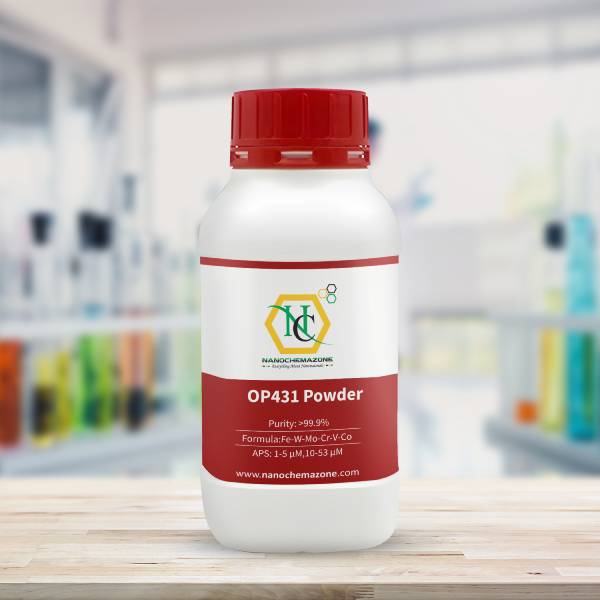
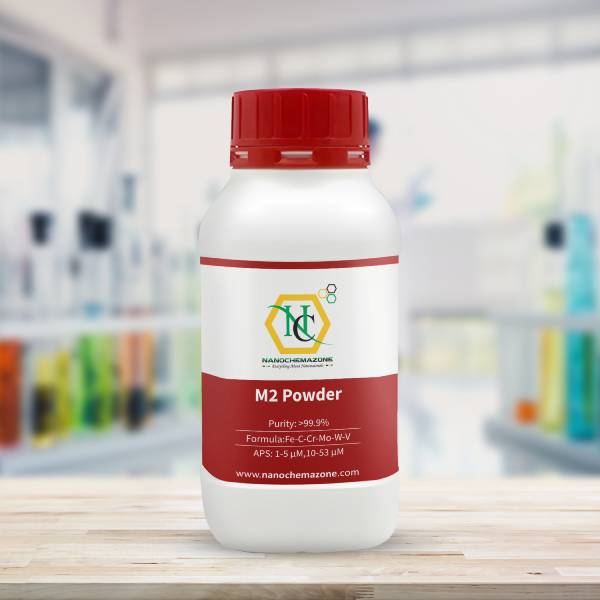
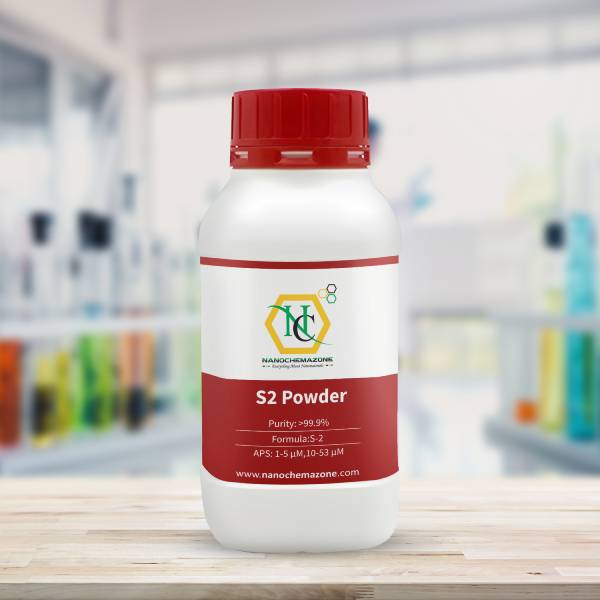
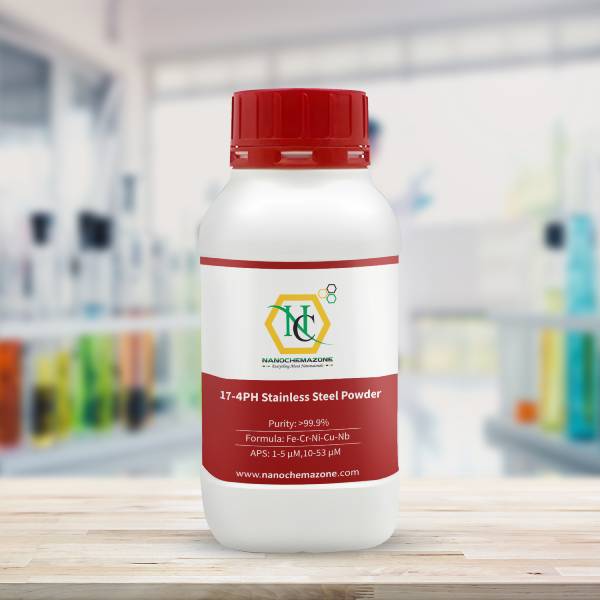
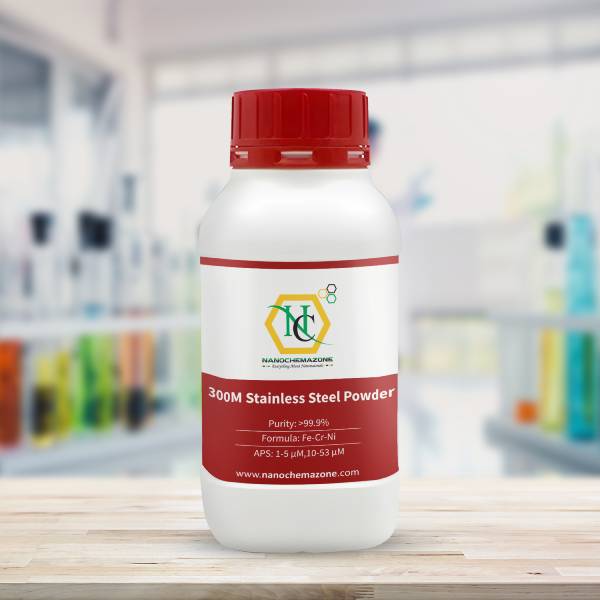
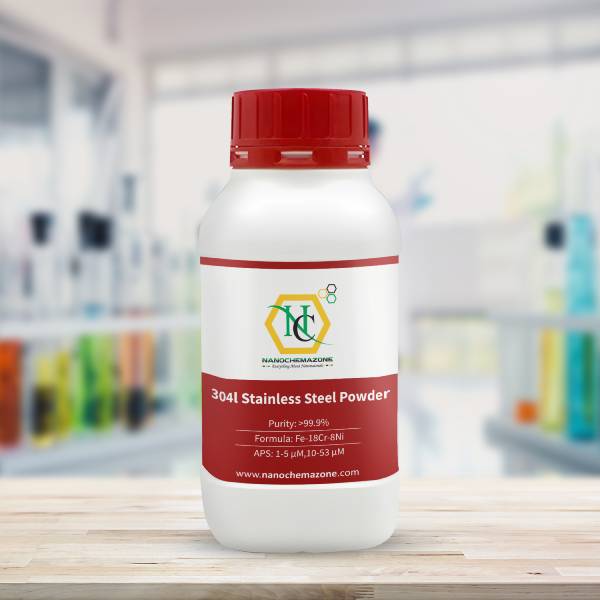
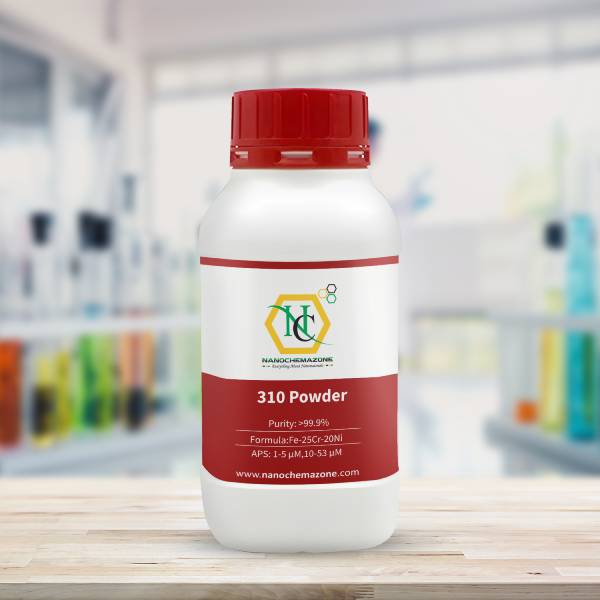
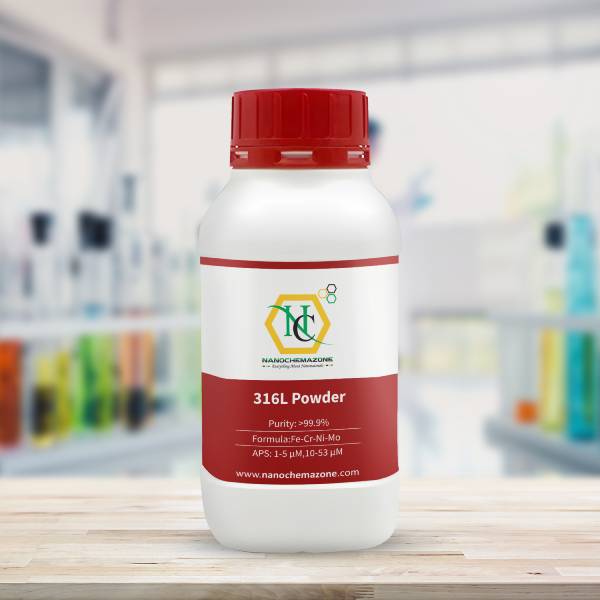
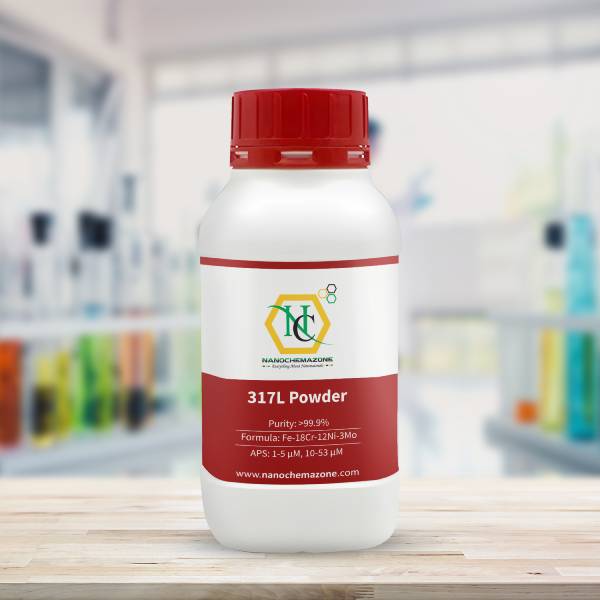
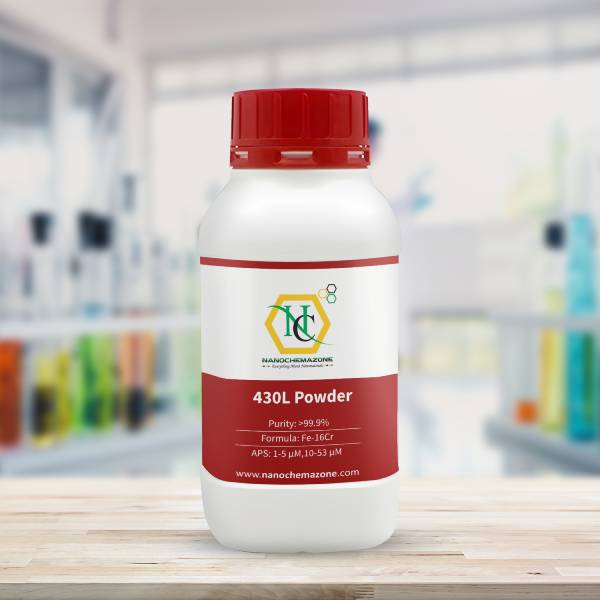
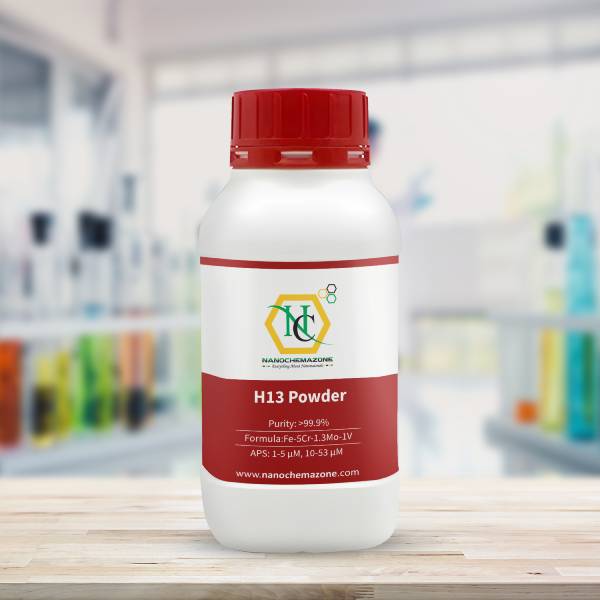
Reviews
There are no reviews yet.